In early 1971 Pauline Kael published a pair of essays in the New Yorker about Citizen Kane, on the 30th anniversary of that film’s creation. By this time Kane was widely considered the greatest film ever made: It had risen to the top of Sight and Sound magazine’s authoritative once-a-decade poll of film critics and scholars in 1962, and would keep its place in 1972—and then in 1982, 1992, and 2002, its half-century run ending in 2012 when Hitchcock’s Vertigo nipped in ahead of it (wrongly).
Almost immediately Kael’s essays became enormously controversial, but not because she contested the general estimation of the film; indeed, she agreed that it is very great. But one of the central claims of her essays is that, while Orson Welles did indeed direct the film, he wrote almost none of it. Instead, it was written by Herman Mankiewicz, who had been credited merely as co-author.
Kael’s claim was immediately and passionately contested by the film critic Andrew Sarris and by a young man named Peter Bogdanovich, who soon thereafter became a noted director himself, and may, in his dissent from Kael, have been writing on Welles’s behalf and even at his dictation. (Bogdanovich was in those days a friend of, a kind of spokesman for and defender of, Welles.) As for Sarris, he had been the critic most responsible for introducing the auteur idea to America, an idea that previously had been associated primarily with French directors who also wrote their screenplays and were therefore in some important sense the only begetters, the authors, of their films. Sarris saw that there had been a hitherto unrecognized American version of this tradition in, for instance, the films of Billy Wilder and Preston Sturges; and Welles was an excellent candidate as well. Welles thought so too. He once said, “Theatre is a collective experience; cinema is the work of a single person.”
Every aspect of this debate is interesting, I think: the extent to which Welles simply filmed what Mankiewicz had written, the validity of the claim that “cinema is the work of a single person.” (NB: It isn’t. Ever. At all.) But I believe that that authorship/auteur-ship controversy has tended to obscure the most incisive and generative insight of Kael’s essay: In a very important sense, Citizen Kane is a comedy about newspapers. And that is a surprising and generally unacknowledged key to its lasting greatness.
•
Most viewers of Kane will remember that the film concludes in Kane’s great mansion Xanadu, stuffed with a lifetime’s hoarding of what the fake newsreel from the start of the film calls “the world’s loot”: paintings, sculptures, furniture, jigsaw puzzles—and a child’s sled with the word “Rosebud” stenciled across it. We see the sled thrown into a fire; we see the smoke from the fire rising above Xanadu; the camera pulls back in order to repeat the very first shot of the film, a chain-link fence marking the perimeter of Xanadu with a sign affixed to it: NO TRESPASSING. And then: THE END.
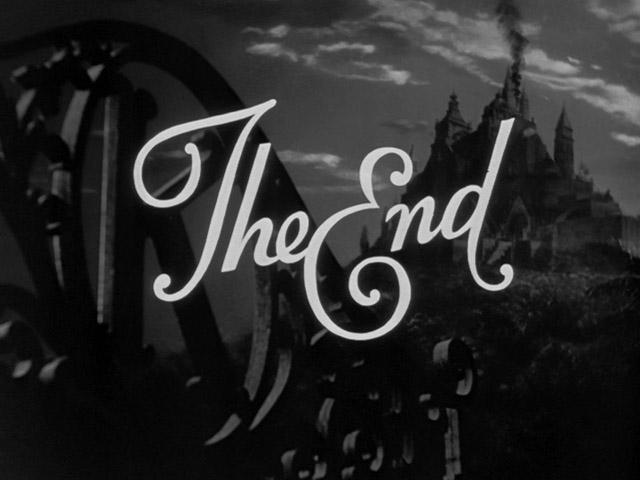
But Kael noticed that the film doesn’t actually stop there. After THE END we see a title card announcing: “Most of the principal actors in CITIZEN KANE are new to motion pictures. The Mercury Theatre is proud to introduce them.” (The Mercury Theatre was the company Welles had founded in New York and then brought with him to Hollywood when he agreed to direct Kane. How its definitive presence here at the film’s end may be reconciled with Welles’s claim that “cinema is the work of a single person” I leave as an exercise for the reader.) These actors are “introduced” by small clips from their scenes in the film, followed by their names. We see ten of them, the last of whom is George Coulouris, who played William P. Thatcher, “grand old man of Wall Street” and one-time guardian of Charles Foster Kane. Thatcher reads from a letter written to him by Kane: he says “I think it would be fun to run a newspaper.” He looks up and repeats the sentence in tones of incredulity: “I think it would be fun to run a newspaper.” And those are the final words of Citizen Kane.
As with all of the words said in that credits scene, we have heard them before—in this case, near the beginning of the story, in which Thatcher is a major presence. When young Charles’s mother comes unexpectedly into a great fortune, Thatcher handles the paperwork, and then, at Mrs. Kane’s request, becomes her son’s guardian. Once Kane turns 25 and comes into his full inheritance, Thatcher is, as Kane reminds him, an “ex-guardian” whose only power over the young man is the power of persuasion, which, as it turns out, is no power at all. Indeed, the financial world Thatcher represents becomes a primary target of the crusading populist papers that Kane runs.
The authorship argument of “Raising Kane” is simply wrong, and it is hard to see how Kael didn’t know it was wrong.One of the central conflicts of the movie pits Kane’s journalistic populism, and his subsequent political aspirations, against the arrayed forces of New York machine politics and Wall Street. These forces Kane, for all his massive wealth and great energy, cannot defeat. His retreat to Xanadu, his great Florida estate, is an implicit acknowledgment of his defeat. The point is made more strongly when you recall—as everyone recalls—that the model for Kane, William Randolph Hearst, built his estate in California. So a two-coasts tension—the East of old money and old power, the West of energetic upstarts—is intrinsic, of only by implication, to the evolving story of Charles Foster Kane and the movie that nears his name.
But there’s another two-coasts tension at play here, which Kael notices and carefully unstitches. This conflict is between a newspaper culture centered in New York and the emergent alternative culture of Hollywood. The Two Cultures—not, with apologies to C.P. Snow, the sciences and the humanities but rather the Gutenberg world and the post-Gutenberg world. In order to emphasize this point, Kael devotes a good chunk of “Raising Kane”—as her two essays were collectively and rather inevitably titled—to a capsule biography of Herman Mankiewicz and the journalistic world he dwelled in before running out of money and having to decamp for Hollywood to find a job. For Mankiewicz was at one point, like Kael, a reviewer for the New Yorker. He also wrote for the New York Times and the Saturday Evening Post and Vanity Fair; he co-wrote plays and revues that were staged on Broadway. He was a member of the tiresomely famous Algonquin Round Table.
He was also a drunkard, and Kael claims that his alcoholism made his employment precarious. At one point, Kael says, Mankiewicz wrote a scathing review of a play starring a rich man’s wife, a play that had been put on only with the rich man’s money, but fell asleep over his typewriter before finishing it—a scene reproduced precisely in Citizen Kane. All the doors were closing for Mankiewicz in New York; just as he realized that, he noticed that doors in California were standing wide open.
This was in the mid-1920s, and 15 years later we see him sitting down to write a screenplay about the newspaper world he had left, an affectionate portrayal, if larded with cynicism—but, and for Kael this is the key point, it is a screenplay, a script for a movie. Mankiewicz will use the movies to tell a story about the print world that he loved and that the movies were then displacing and trampling into the dust. The ironies are irresistible—or were to Kael, which shows us that if Sarris and Bogdanovich were surely tempted to engage in some motivated reasoning about the composition of the Kane screenplay, Kael was too. And she succumbed to that temptation.
For we now know that Welles was very much the co-author of Kane. The authorship argument of “Raising Kane” is simply wrong, and it is hard to see how Kael didn’t know it was wrong. When she started her work on Kane she was living temporarily in Los Angeles, and drew heavily on the work of a film professor at UCLA named Howard Suber, but that research bore witness to a much more complex story than the one Kael would end up telling. She just ignored everything that didn’t fit. Probably the standard view—that she was so unremittingly hostile to the auteur theory that she would use any stick to beat that dog — is correct. (For those who want to know how Kane was actually written, and filmed, Robert Carringer’s The Making of Citizen Kane remains the definitive account.)
Kael promised to name Suber co-author of the article: that’s how she got him to share his massive trove of interviews of people involved in their making of Kane. This promise she surely never intended to keep, and indeed she never admitted that almost all the actual research in “Raising Kane” was done by Suber, who never said anything about the theft until after Kael’s death. (He later commented that he found the whole episode distressing that he just wanted to put it behind him.) He did, though, make the rather mild comment to Peter Bogdanovich that before publishing her argument Kael certainly should have interviewed Welles. This comment so outraged Kael that she declared she would never return to UCLA until Suber apologized to her—a declaration that comes from somewhere well on the far side of chutzpah.
(Welles himself didn’t make much fuss about Kael’s claim that he played no role in the writing of Kane, but for a reason much more comprehensible than Suber’s: “Raising Kane” was published alongside the Welles/Mankiewicz screenplay in The Citizen Kane Book, which means that, Mankiewicz being long dead, he got half the book’s royalties. Since it sold very well, Welles’s silence proved to be quite lucrative for him.)
Kane arises from a theatrical and cinematic (and, indirectly, journalistic) tradition that made no claims to profundity.In addition to the thefts from Suber, there are also a number of factual errors in the essays, which suggests that William Shawn allowed the entire 50,000 words to bypass the fact-checking for which the New Yorker was then so famous. Perhaps that is one reason why, when the Library of America recently published a collection of Kael’s writing on film, they omitted the single most famous piece she ever wrote.
There are many sad, even distressing, elements to this whole fiasco, but one perhaps relatively minor one has long stuck in my craw: Kael didn’t need to make Mankiewicz the sole author of the Kane screenplay in order to make the point she wanted to make about the Two Cultures of newspaper and cinema. She saw very clearly something that almost all other critics—bedazzled by the circular structure of the film, the outrageously innovative cinematography of Gregg Toland, the strange geometries of Welles’s compositions—failed to notice: that Kane was at the time of its release just the latest in a long series of movies about newspaper people.
When Herman Mankiewicz got settled in Hollywood, one of the first people he asked to join him was Ben Hecht, who like him had been both a newspaper journalist and a playwright. Decades later Hecht said that he got a telegram from Mankiewicz reading as follows: “WILL YOU ACCEPT THREE HUNDRED PER WEEK TO WORK FOR PARAMOUNT PICTURES. ALL EXPENSES PAID. THE THREE HUNDRED IS PEANUTS. MILLIONS ARE TO BE GRABBED OUT HERE AND YOUR ONLY COMPETITION IS IDIOTS. DON’T LET THIS GET AROUND.” Hecht ended up becoming the most successful screenwriter in Hollywood history, and one of the most prolific. (One of his last writing jobs was to ghostwrite Marilyn Monroe’s autobiography.)
In 1928, just before making his way to California, Hecht, along with his friend Charles MacArthur, wrote a play called The Front Page, featuring the complex relationship between an editor named Walter Burns and a reporter named Hildebrand (Hildy) Johnson. It was a huge hit, and has been revived on Broadway many times. Several versions of the story have also been filmed, the most famous of them—rightly—being His Girl Friday, which appeared the year before Kane and stated Cary Grant as Burns and Rosalind Russell as Hildy (Hildegard rather than Hildebrand, and transformed into Burns’s ex-wife). If you watch the first few minutes of His Girl Friday and then the newsroom scene in which Thatcher confronts Kane, the kinship is obvious and strong. But as far as I know no one had noticed it before Kael.
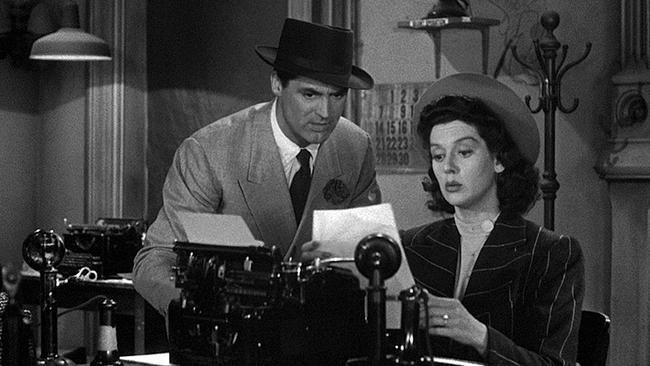
•
Here’s a fact worthy of our reflection: there are millions of people who have never seen Citizen Kane and know nothing about the film but are very familiar with one brief sequence, because it has become a meme: Kane’s defiant standing and clapping for his wife Susan after her disastrously bad operatic performance. (When I was on Twitter there were several occasions on which I gave and received Kane Claps.)
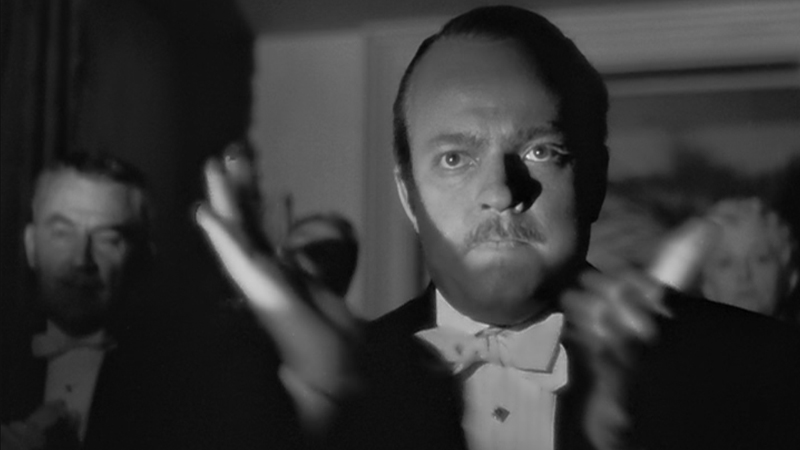
That is indeed a memorable moment, but it only makes sense, dramatically, in light of an enormously complex scene that comes a few minutes before it. Kane’s new wife Susan Alexander—a former lounge singer with a classic Judy Holliday Noo Yawk accent—has just had her opening night singing in the opera house Kane has built for her. (The Met, we infer, wasn’t interested.) Jed Leland, Kane’s former best friend from whom he has been alienated for many years, remains the lead theater critic for Kane’s paper, and has returned to the office to write his review. But when we see him he—like Herman Mankiewicz before him—has fallen asleep over his typewriter. (A half-empty bottle of hooch looms prominently in the right foreground of the shot.) He has written only a few sentences, the first of which begins, “Miss Susan Alexander, a pretty but hopelessly incompetent amateur….”
And there his former friend Charles Foster Kane finds him. He rips the sheet of paper from the platen, reads it—and starts laughing. He decides to finish the review himself, but not to correct it. (Says Kane’s faithful assistant Bernstein to Leland, with a quiet irony directed at both men, “I guess that’ll show you.”)
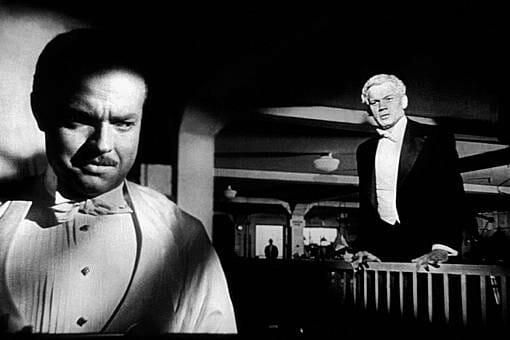
Why does Kane do this? Leland’s interpretation: “He thought that by finishing that notice he could show me he was an honest man. He was always trying to prove something.” Maybe. Or maybe because he knows that a vicious review sells newspapers like a rave review never could. Then he fires Leland—but does he fire him for speaking ill of Susan‘s singing? (Every other review of her singing in a Kane paper, for the rest of her short career, is rapturous.) Or for not getting the paper-selling review finished and ready for the printer? And why does he send Leland a check for $25,000 (around $300,000 today) when he fires him?
Kane clearly is being pulled in different directions, but one element pulling is social class. At one point in the film Kane jokingly, or not jokingly, calls Leland a “stuffed shirt” and a “New England schoolmarm”—taunts from a boy born and raised in the wilderness. After all, Charles Foster Kane‘s mother ran a boarding-house in Colorado: he is nouveau riche, not to the manner born—as much of a cultural outsider as Susan Alexander, though in a different way. Jed Leland may work for his friend Charlie Kane, he is clearly of a different social class. There’s an elegance to Leland that Kane can’t match, something that the film emphasizes by having Kane grow thicker and balder as the years pass, while Leland remains slender, his hair thick and curly even when he goes gray. And while Leland writes for Kane’s newspaper, he doesn’t involve himself in the rough-and-tumble of high-stakes reporting, of social agitation, but rather confines himself to theatrical criticism. It’s only when Kane, by trying to make Susan an opera singer of all things, strays into Leland’s territory that the conflict between them becomes irreconcilable.
By firing Leland Kane acknowledges that if Leland’s support cannot be bought the man must be exiled; by sending Leland the $25,000 check he acknowledges the great value of a man who writes well and cannot be bought. In the first case Kane is acting as an arriviste determined to defeat his social betters; in the second he acts as a newspaperman. Leland clearly believes that the former has defeated the latter, because he sends Kane an envelope bearing two things: the torn-up check for $25,000, and the “Statement of Principles” which Kane had written out when he started his first newspaper. Leland rips up the check; Kane rips up the Statement of Principles. Score one for the New England schoolmarm—and for journalism.
•
Why was Hollywood interested in newspapers? It should quickly be said that Hollywood is primarily interested in tabloid newspapers, because of the flamboyant and scandalous material that those kinds of papers always look for. “Headless Body in Topless Bar” is the most famous newspaper headline that ever ran, I suppose, but of course it ran in the New York Post (April 15, 1983), not the Times. The more staid and responsible papers are likely to get the Hollywood treatment only when they stumble on something obviously dramatic: see, for example, the 2015 film Spotlight. Liev Schreiber’s careful, patient, dogged Marty Baron in that film is hardly typical of the Hollywood image of editors. Walter Burns of The Front Page is not a careful, responsible, fact-checking journalist: he’s a guy trying to sell papers by any means necessary.
In any Hollywood newsroom set, the combination of dramatic stories and unscrupulous editors makes for some nicely energetic scenes—especially if you have screenwriters who can produce snappy dialogue. And if you had Ben Hecht or Herman Mankiewicz or Charles Lederer—who wrote the screenplay for both the original film of The Front Page in 1931 and for His Girl Friday, in the latter case with help from Hecht—you were basically all set.
The newsroom: a chaotic place, populated by a heterogenous assemblage of people with widely varying interests and moral standards, unified only by ambition and an addiction to adrenaline jolts, who somehow manage through an inexplicable convergence of energies to produce a single artifact—an Artifact for the People. Very much like a movie set, then. One may have produced the printed word, the other moving images with sound—one may be a technology of the past, the other a technology of the future—but the circumstances of their making were remarkably similar. They were alike cooperative and social. I think this commonality interested Kael more than the familiar and obvious story of cultural power shifting from the print medium to the image medium. In a sense Hollywood replaced tabloid journalism as a source of entertainment; in another sense Hollywood is the continuation of tabloid journalism by other means.
Similarly, I think what interested Kael about both newspapers and the movies was the vision they provided of intelligent, resourceful people doing something that they knew to be slightly disreputable, that they knew their parents and friends might well look gently down at them for being engaged in. (E.g.: Herman Mankiewicz, A.B. Columbia 1916, where his father was Professor of Education.) This was not Kael’s situation at all: she was a California farmer’s daughter who never graduated from university. But she wrote about movies for a magazine that—despite its origin as a humor magazine and the confetti of cartoons that dotted every issue—generally aspired to culturally higher things. It published Major Writers, and its nonfiction especially (think of John Hersey’s Hiroshima or Rachel Carson’s Silent Spring, both first published in the magazine) was notable for its dry, often colorless, I-am-a-camera objectivity. Kael was anything but dry, and wore her enthusiasms and hatreds on her sleeve in a way that was truly uncharacteristic of the magazine for most of the years she wrote for it.
Her instantly recognizable voice and fierceness of opinion were often put in service of what she saw as the distinctive American way of making movies: cheerfully commercial and populist and not afraid to be fun—everything that, in her view, the auteur-driven cinema of the Continent, and especially France, was not. She celebrated Citizen Kane on just these grounds: thus her insistence that Welles is not the auteur of Kane but rather the primus inter pares, the first among equals in its making. Thus her insistence that that movie itself is, in more ways than one, the most recent installment of the old Front Page-style newsroom comedies. Charles Foster Kane is a kind of Walter Burns to Jed Leland’s Hildy Johnson; but equally, behind the scenes, Orson Welles as director is a kind of Burns to Mankiewicz’s Hildy.
“Two clichés make us laugh. A hundred clichés move us.”And thus, finally, her insistence that Kane “is conceived and acted as entertainment in a popular style,” that it is “a shallow work, a shallow masterpiece.” Kael’s critics have often been appalled by her use of the word “shallow” here, but though she meant it, she also and equally meant “masterpiece.” Throughout “Raising Kane” it is luminously obvious that Kael adores the movie. Her argument on its behalf is closely related to the one that Umberto Eco makes on behalf of Casablanca, another shallow masterpiece that appeared a year-and-a-half after Kane.
Noting that in Casablanca “characters change mood, morality, and psychology from one moment to the next … conspirators cough to interrupt the conversation if a spy is approaching … whores weep at the sound of ‘La Marseillaise,’” he points to the significance of the fact that we viewers whole-heartedly accept all this. “When all the archtypes burst in shamelessly, we reach Homeric depths. Two clichés make us laugh. A hundred clichés move us. For we sense dimly that the clichés are talking among themselves, and celebrating a reunion.” And this, Eco thinks, is not the result of the grand design of an auteur. Rather, “something has spoken in place of the director.” Something that arises from the reunion of the clichés, something that the makers of the film had the shrewd wisdom not to keep out or even control.
Much the same is true of Kane, which is why it is both shallow and a great, great film. Kane arises from a theatrical and cinematic (and, indirectly, journalistic) tradition that made no claims to profundity; paradoxically, it is the fidelity of Kane to this “shallow” tradition that, Kane believes, seeds its greatness. To her fellow film critics—the ones who vote for Kane in “best film ever” polls—she says, implicitly, “Welles is no auteur, and Kane is not the kind of film you think it is. If you really understood it you’d condemn it. And you’d be wrong to do so—just as you’re wrong now.”
•
In Michael Chabon’s novel The Amazing Adventures of Kavalier and Clay, Joe Kavalier—a young Jewish refugee from Prague living in New York City and beginning a career as an illustrator of comics—goes to the theater to see Citizen Kane. He finds himself thinking, and trying to explain to his cousin and collaborator Sammy, that Kane, “more than any other movie Joe had ever seen,” achieved “the total blending of narration and image that was … the fundamental principle of comic book story telling.”
Without the witty, potent dialogue and the puzzling shape of the story, the movie would have merely been an American version of the kind of brooding, shadow-filled … expressionist stuff that Joe had grown up watching in Prague. Without the brooding shadows and bold adventurings of the camera, without the theatrical lighting and queasy angles, it would have been merely a clever movie about a rich bastard. It was more, much more, than any movie really needed to be. In this one crucial regard—its inextricable braiding of image and narrative—Citizen Kane was like a comic book.
If you look at the black-and-white comics of the masterful Will Eisner, the similarities of Eisner’s visual language to that of Citizen Kane are obvious. (Chabon’s characters create a comic called The Escapist, which was later made into an actual comic. Issue number 6 of The Escapist [2004] includes the final appearance of Eisner’s character the Spirit, who had his first appearance in 1940, as Mankiewicz and Welles were working on the screenplay for Kane.)
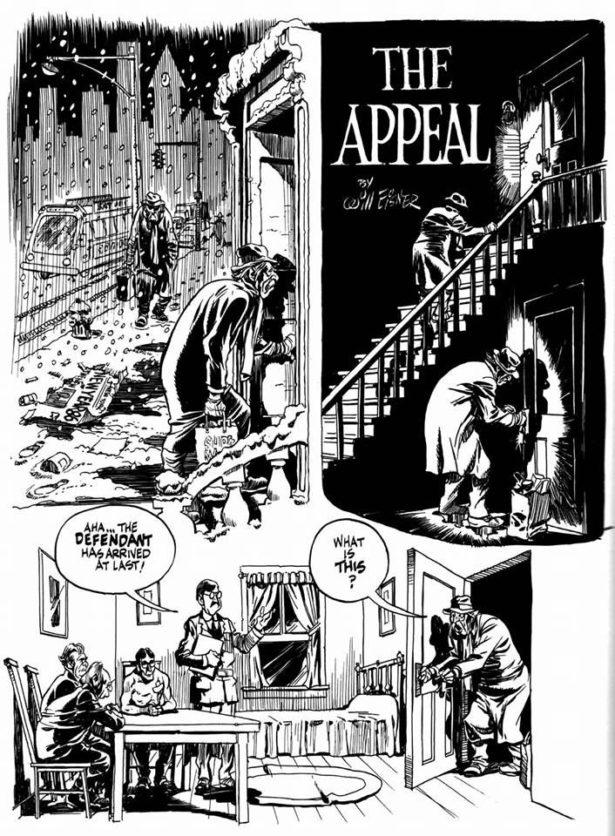
Kael tries to get at a point very like this one by referring to Kane as a “Gothic comedy”: the “witty, potent dialogue” that comes from the newsroom comedies of Broadway and the early talkies is merged with the “theatrical lighting and queasy angles” that look Gothic, European, maybe even, yes, Expressionist. (But Gregg Toland, the genius cinematographer who did so much to shape the movie’s cinematic style, was not a European refugee but rather a native of east-central Illinois.) She takes the point too far, of course: Kane is greatly indebted to those earlier comedies but it would be a perverse viewer indeed who walked out of the theater after seeing Charles Foster Kane’s demise thinking “What a charming comedy.”
Joe Kavalier has a vision of comics as a powerfully hybridized endeavor: text and image, European and American, “popular” and “serious.” Similarly, Kael sees Kane as energized by the multiplicity of the forces that pass into and through it, as constituted by its tensions. What she realized was that there are more such tensions than a superficial viewing might reveal. It is easy enough to say that Kane, as a movie that portrays the downfall of a titan of print media, represents or somehow enacts the transfer of cultural power from print to film. And to say that would not be wrong. But what Kael uniquely understands is that that transfer is also a kind of homage—and more than an homage: a continuation of a flamboyant and entertaining social project by other means, in a new form.
And the tensions which generate the magnificent energies of Citizen Kane—text and image, New York and Hollywood, “serious” and “popular,” elite and arriviste, the solitary and the collaborative—continue unabated in today’s media, with the massive added complications of Silicon Valley and the world of the web; complications that turn every binary into a triangulation. And a powerful instrument for comprehending these forces may be found, oddly enough, in a movie that was released in 1941. Kael’s lies and thefts and distortions and exaggerations have served not to reinforce this vital point about Kane’s relationship with earlier media — which was, after all, the chief thing she wanted to say — but rather to obscure it. This is a shame, because if you strip away all the nonsense you find in “Raising Kane” a key that unlocks much of the mystery of the power of this endlessly compelling film, which may still be, even now, the greatest yet made.



